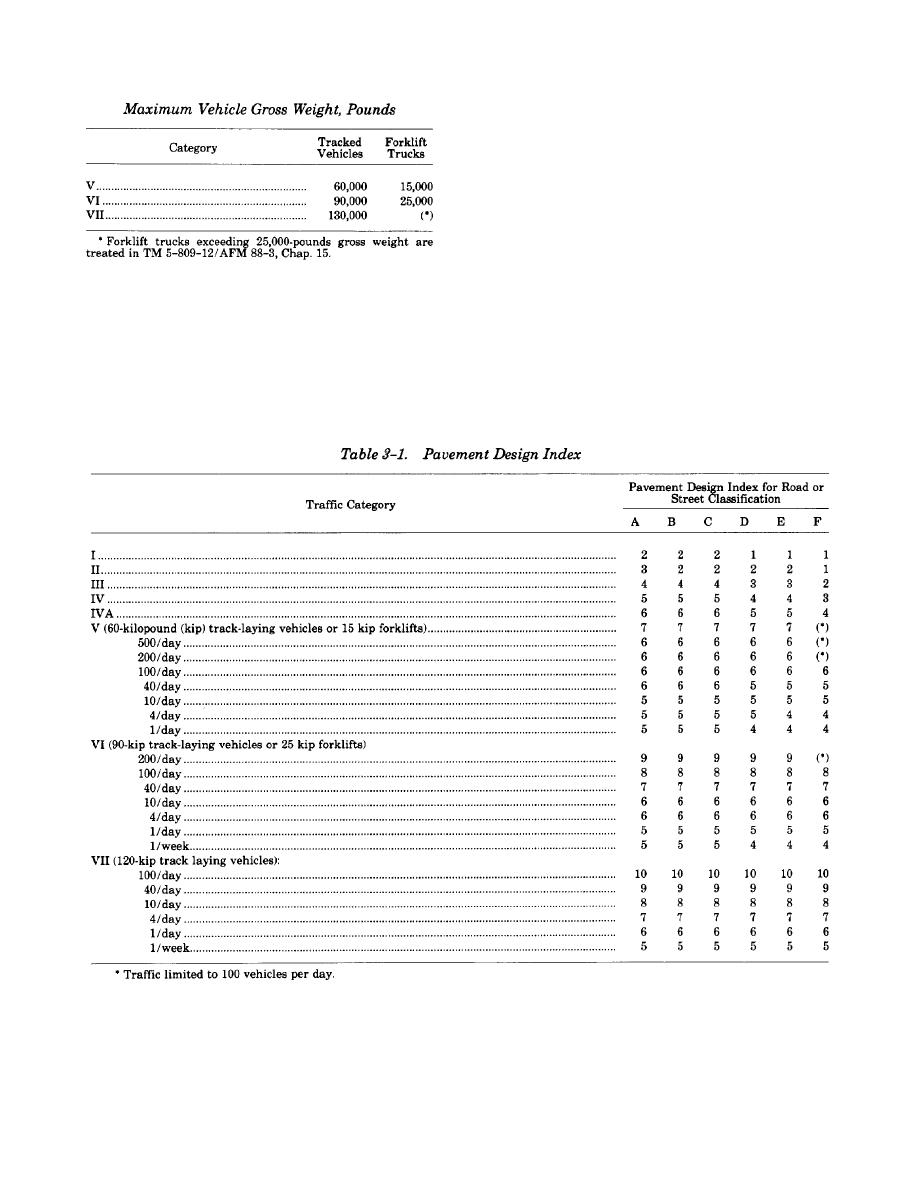
TM 5-822-5/AFM 88-7, Chap. 1
increase in numerical value indicative of an increase
in pavement design requirements. Table 3-1 gives
the appropriate design index for combinations of
the eight traffic categories based on distribution of
traffic, vehicle type, and the six-letter classifications
based on the volume of traffic. For example,
suppose an average daily traffic (ADT) of 2,000
vehicles composed primarily of passenger cars,
panel trucks, and pickup trucks (group 1), but
including 100 two-axle trucks (group 2) is
c. Selection of design index. The design of
anticipated for a road in flat terrain. First, the road
pavements for Army and Air Force roads, streets,
class is determined from TM 5-822-2/AFM 88-7,
and similar areas is based on a "design index,"
Chap. 5 to be a class D road. Second, the group 2
which represents the combined effect of the loads
vehicles are 100/2,000 or 5 percent of the total of
defined by the traffic categories just described and
groups 1 and 2, making this category II traffic.
the traffic volumes associated with each of the
Therefore, the appropriate design index from table
lettered classifications of roads or streets. This
3-1 is 2.
index extends from one through ten with an
(1) Tracked vehicles and forklift trucks.
tired vehicles, forklifts, and tracked vehicles are to
Provision is made whereby the designer may
be considered, the proper letter classification of the
determine pavement design requirements for
road or street is determined from TM 5-822-2/
tracked vehicles or forklifts in combination with
AFM 88-7, Chapter 5 according to the total volume
traffic by pneumatic-tired vehicles or for traffic by
of traffic from all types of vehicles. In table 3-1 the
tracked vehicles or forklifts only. Where pneumatic-
traffic for categories V, VI, and VII has been
3-2



 Previous Page
Previous Page
